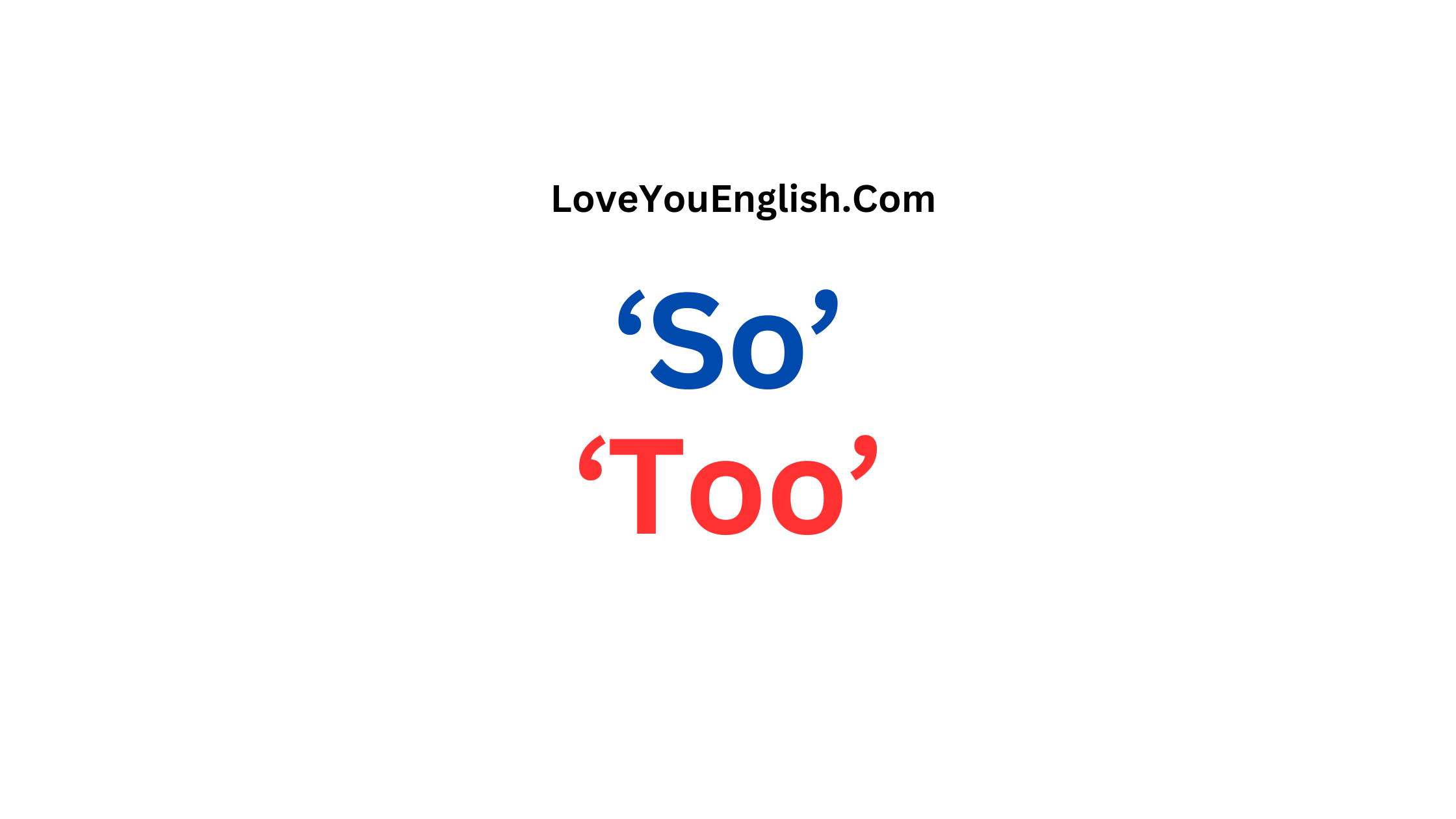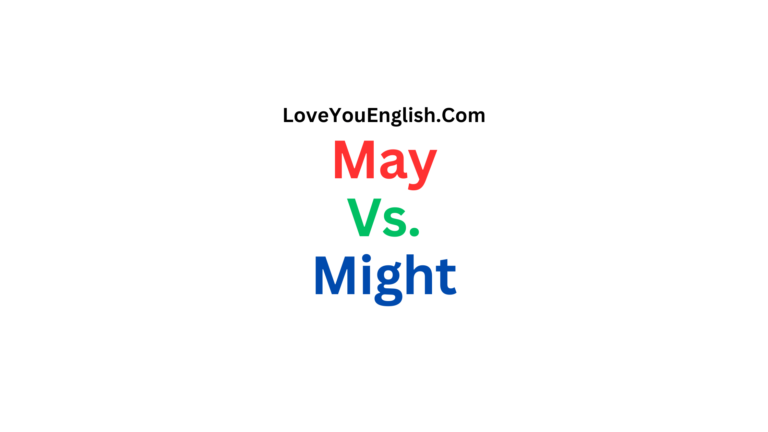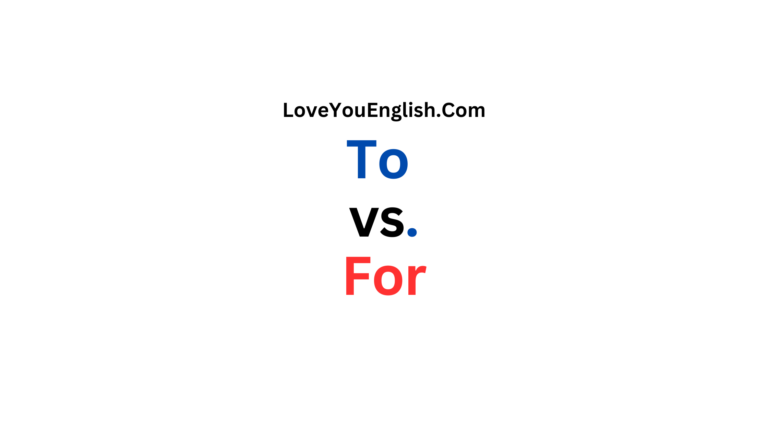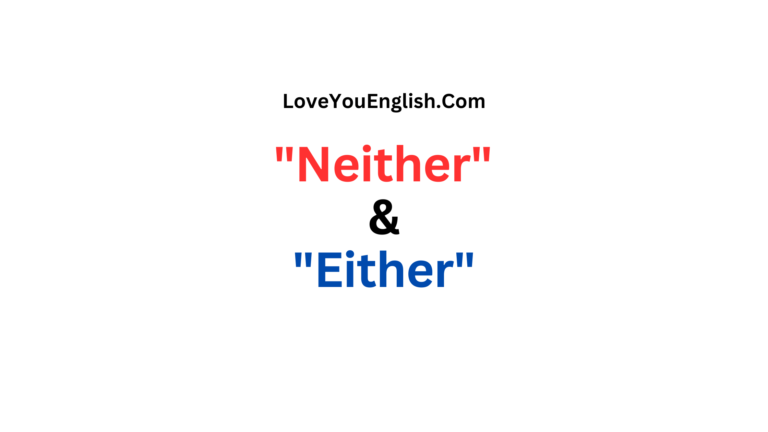English Grammar: The Difference between ‘So’ & ‘Too’
Have you ever hesitated when choosing between “so” and “too” in a sentence? You’re not alone.
These small words carry distinct meanings that can change the entire message of your writing.
Despite their simplicity, even native English speakers sometimes mix them up.
Let’s break down the difference between these commonly confused words and master their usage once and for all.
Table of Contents
ToggleUnderstanding “So”
“So” is one of the most versatile words in the English language. It works as both an adverb and a conjunction, making it incredibly useful but sometimes tricky to use correctly.
“So” as an Adverb
When used as an adverb, “so” indicates the degree or extent of something. It answers the question “how much?” or “to what extent?”
Examples:
- The movie was so good that I watched it twice.
- I was so tired after the marathon.
- She speaks so quietly that I can barely hear her.
Notice how “so” describes the intensity of the feeling or action. It emphasizes just how good, tired, or quiet something is.
“So” as a Conjunction
“So” also functions as a conjunction, connecting ideas by showing cause and effect or purpose.
Examples:
- It was raining, so we stayed inside.
- I studied hard so I could pass the exam.
- She was feeling sick, so she went home early.
In these sentences, “so” connects two related ideas, showing that the second part happens because of the first part.
“So” in Everyday Speech
In casual conversation, “so” has taken on additional roles. People often start sentences with “so” to introduce a topic or continue a previous thought:
- So, what did you think of the movie?
- So, as I was saying earlier…
Understanding “Too”
Unlike the versatile “so,” “too” has a more specific role as an adverb. It typically expresses excess or addition.
“Too” Meaning “Excessive”
When “too” indicates excess, it suggests something goes beyond what is desirable or acceptable.
Examples:
- The coffee is too hot to drink.
- She arrived too late for the meeting.
- This box is too heavy for me to lift.
In these examples, “too” indicates that something exceeds a comfortable or acceptable level—the coffee exceeds a drinkable temperature, the arrival time exceeded the acceptable window, and the weight exceeds the person’s lifting capacity.
“Too” Meaning “Also” or “Additionally”
“Too” can also mean “also” or “as well,” typically appearing at the end of a sentence or clause.
Examples:
- I want to come too.
- She likes chocolate ice cream too.
- If you’re going to the store, I’ll go too.
This usage of “too” adds information, showing that the same condition applies to someone or something else previously mentioned.
Key Differences Between “So” and “Too”
Now that we understand each word individually, let’s highlight their key differences:
Function and Meaning
- So: Indicates degree/extent or shows cause and effect
- Too: Expresses excess or addition/inclusion
Position in a Sentence
- So: Can appear almost anywhere in a sentence depending on its function
- Too: When meaning “excessive,” typically appears before an adjective or adverb; when meaning “also,” typically appears at the end of a clause or sentence
Grammar Partners
- So: Often paired with “that” when describing intensity (so good that…)
- Too: Often paired with “to” when describing excess (too hot to handle)
Common Mistakes and How to Avoid Them
Mistake 1: Using “So” When You Mean “Too”
Incorrect: The water is so hot, I can’t drink it. Correct: The water is too hot for me to drink.
The first sentence isn’t technically wrong, but it’s incomplete. If using “so,” you should complete the thought: “The water is so hot that I can’t drink it.”
Mistake 2: Confusing “Too” and “To”
This is a common spelling error rather than a usage problem.
- Too: Adverb meaning “excessive” or “also”
- To: Preposition or part of an infinitive verb
Example: Incorrect: I want to go to the party to. Correct: I want to go to the party too.
Mistake 3: Using “So” and “Too” Together
Incorrect: The movie was so too scary. Correct: The movie was so scary. OR: The movie was too scary.
Using both intensifiers together is redundant and incorrect.
Perfect Your Usage with These Tips
For “So”:
- When describing intensity, ask yourself: “To what degree?” If you’re answering this question, “so” is likely your word.
- When connecting ideas, ask: “Does this show a result or purpose?” If yes, “so” as a conjunction is appropriate.
- Remember that “so” often pairs with “that” when describing consequences of intensity: “It was so cold that the lake froze.”
For “Too”:
- When describing excess, ask: “Is this more than needed or wanted?” If yes, “too” is your word.
- When adding information, ask: “Am I indicating that something applies to an additional person or thing?” If yes, use “too” (meaning “also”).
- Remember that “too” often pairs with “to” when describing excess that prevents an action: “too tired to work.”
Real-World Applications
Understanding the difference between “so” and “too” isn’t just about grammar—it’s about clear communication. Consider these scenarios:
In Business Writing:
“The deadline is so tight” suggests intensity but doesn’t necessarily indicate a problem. “The deadline is too tight” clearly indicates that the timeframe is problematic and may need adjustment.
In Personal Communication:
“I’m so happy you’re coming” expresses enthusiasm about someone’s attendance. “I’m happy you’re coming too” indicates that the speaker is pleased that this person, in addition to others, is attending.
Conclusion
The small words “so” and “too” may seem interchangeable at first glance, but they carry distinct meanings that can significantly impact your message. “So” primarily indicates degree or cause-effect relationships, while “too” expresses excess or addition.
By understanding these differences and practicing their correct usage, you’ll strengthen your communication skills and express yourself more precisely. Next time you’re deciding between “so” and “too,” remember their core functions, and you’ll make the right choice.
The beauty of language lies in these subtle distinctions—the small words that make big differences in meaning. By mastering these common words, you’re taking an important step toward more effective and precise communication, whether in writing or conversation.







